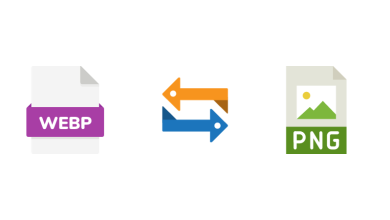
Introduction
As the software industry evolves rapidly, testing methods and tools must be kept up to ensure quality and efficiency. 2024 will bring several transformative trends that will reshape the software testing landscape. From advancements in artificial intelligence (AI) to the growing importance of security testing, these trends are not just buzzwords—they’re essential shifts that could define the success of your software projects. This post will explore the top software testing trends in 2024, helping you stay ahead of the curve and ensure your testing strategies are future-proof.
1. The Rise of AI-Powered Testing
Artificial Intelligence is revolutionizing software testing by automating tasks that were once manual and time-consuming. In 2024, AI-powered testing tools will become more prevalent and sophisticated, enabling testers to identify defects faster and more accurately.
AI in Test Automation: AI algorithms can analyze large datasets, learn from patterns, and predict potential issues before they occur. This not only accelerates the testing process but also improves its reliability. AI-driven tools can automatically generate test cases, prioritize testing efforts, and even suggest areas of the code that may be prone to bugs.
Self-Healing Test Scripts: One of the most exciting developments in AI testing is the emergence of self-healing test scripts. These scripts can automatically adapt to changes in the application’s UI or code, reducing the need for manual maintenance. This makes test automation more resilient and less prone to breaking when the application under test evolves.
2. Increased Focus on Shift-Left Testing
Shift-left testing, where testing is integrated earlier in the development process, is becoming a critical practice as teams embrace agile and DevOps methodologies. In 2024, this trend will gain even more momentum as organizations realize the benefits of early defect detection and faster feedback loops.
Collaboration Between Developers and Testers: Shift-left testing encourages close collaboration between developers and testers from the outset of a project. This ensures that testing considerations are baked into the design and development phases, reducing the likelihood of defects slipping through the cracks.
Continuous Integration and Continuous Testing: With the rise of CI/CD pipelines, continuous testing will become more integral to the development process. Automated tests will run at every stage of the development cycle, providing immediate feedback and allowing teams to catch and address issues as soon as they arise.
3. Growing Importance of Security Testing
With cybersecurity threats rising, security testing is no longer an optional part of the software development process. In 2024, the emphasis on security testing will increase, driven by the need to protect sensitive data and comply with stringent regulations.
Integration of Security into DevSecOps: DevSecOps, which integrates security practices into the DevOps pipeline, will become the norm. This approach ensures that security testing is continuous, automated, and integrated throughout the development lifecycle rather than being treated as an afterthought.
Advanced Penetration Testing Tools: Penetration testing tools will become more advanced, leveraging AI to simulate sophisticated cyber-attacks. These tools will help testers identify vulnerabilities that traditional methods might miss, ensuring that applications are robust against real-world threats.
4. Expansion of Cloud-Based Testing
Cloud computing continues to dominate the IT landscape so cloud-based testing will see significant growth in 2024. This trend is driven by the need for scalable, flexible, and cost-effective testing environments that adapt to modern software applications’ complexities.
On-Demand Test Environments: Cloud-based testing platforms allow teams to spin up and tear down test environments on demand. This flexibility reduces costs and accelerates the testing process by eliminating the need for physical infrastructure.
Cross-Platform Testing: With more applications deployed across multiple platforms (e.g., web, mobile, IoT), cloud-based testing tools enable comprehensive cross-platform testing. These tools can simulate different environments, devices, and network conditions, ensuring that applications perform consistently across all platforms.
5. The Emergence of No-Code and Low-Code Testing Tools
In response to the growing demand for rapid application development, no-code and low-code testing tools are gaining traction. These tools enable testers with little to no programming knowledge to create and execute test cases, democratizing the testing process.
Simplified Test Case Creation: No-code and low-code platforms allow testers to create test cases using drag-and-drop interfaces or natural language processing. This simplification speeds up the testing process and makes it accessible to a broader range of team members, including business analysts and product owners.
Integration with Existing Tools: Many no-code and low-code testing tools offer seamless integration with existing CI/CD pipelines and popular testing frameworks. This ensures that these tools can be quickly adopted while maintaining current workflows.
6. Enhanced Performance Testing with Real User Simulation
Performance testing is evolving beyond synthetic load generation to include accurate user simulations. In 2024, expect to see a rise in tools and techniques that replicate actual user behavior, providing more precise and actionable insights into how applications perform under load.
User Experience (UX) Testing: Performance testing will increasingly focus on user experience, measuring the speed and stability of an application and how it feels to the end-user. This includes factors like perceived load time, smoothness of animations, and responsiveness to user inputs.
Geographically Distributed Testing: To accurately assess performance for global user bases, testing must account for geographical differences in network speed and latency. Cloud-based testing tools that simulate users from different regions will become more essential.
Conclusion
As we move into 2024, staying ahead of these software testing trends will be crucial for delivering high-quality, secure, and performant applications. From AI-powered testing and shift-left practices to enhanced security and cloud-based testing, these trends represent the future of software testing. By embracing these changes, your team can ensure that your testing strategies are current and equipped to handle the challenges of tomorrow’s software landscape.





